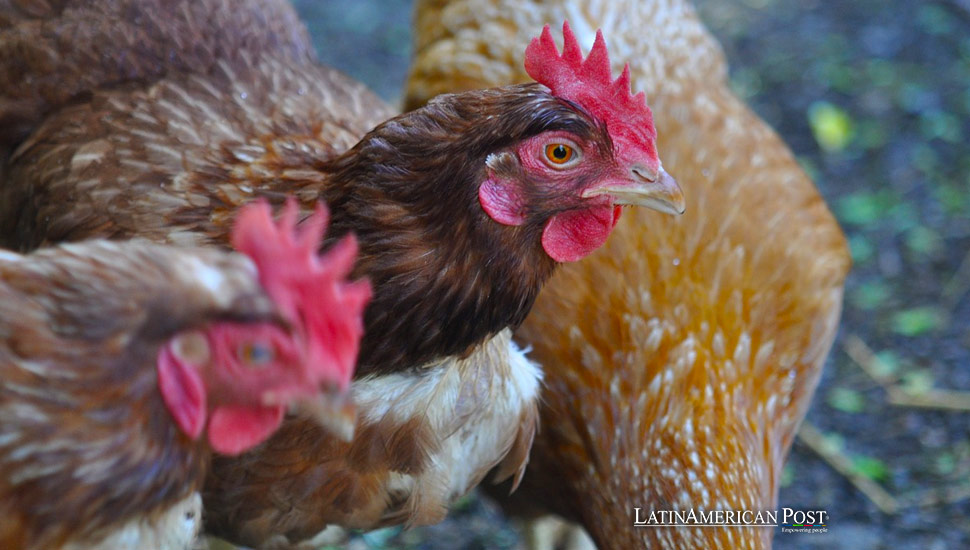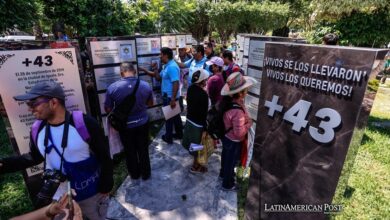Mexico’s First Human Case of Avian Flu

Mexican health authorities report the first human case of low-pathogenic avian influenza A (H5N2), a development that resonates globally, while emphasizing there is no risk to the public and highlighting extensive epidemiological efforts and international cooperation.
In a significant display of resilience, Mexican health authorities have confirmed the country’s first human case of low-pathogenic avian influenza A (H5N2). This announcement, made in the midst of global concerns about avian influenza and its potential impact on public health, is a testament to the robustness of Mexico’s health system. Despite the initial alarm, officials have assured the public that there is no identified risk of contagion, emphasizing the comprehensive measures taken to control and investigate the incident.
The case involves a 59-year-old man from the State of Mexico who had a history of chronic kidney disease, type 2 diabetes, and long-term hypertension. On April 24, he sought medical attention at the National Institute of Respiratory Diseases’ Ismael Cosío Villegas’ (INER) and unfortunately passed away the same day due to complications from his existing health conditions. The initial tests revealed influenza type A, but it wasn’t immediately clear which strain he had contracted.
Further investigation by the Laboratory of Molecular Biology of Emerging Diseases at the INER and the Institute of Epidemiological Diagnosis and Reference (InDRE) confirmed that the patient had contracted the low-pathogenic avian influenza A (H5N2). This marked the first confirmed human case of this particular virus globally.
In a joint statement, the Mexican Secretariat of Health (SSa), along with the Secretariats of Agriculture and Rural Development (Sader) and Environment and Natural Resources (Semarnat), clarified that no identified source of infection exists and that extensive testing of the patient’s contacts yielded negative results.
The statement highlighted that “During an exhaustive epidemiological investigation, all samples from identified contacts tested negative.” Additionally, the SSa has been actively searching for cases of viral respiratory disease and analyzing data to detect any changes in the trends of respiratory illnesses in Mexico City and the State of Mexico.
Global Context and Historical Perspective
Avian influenza, commonly known as bird flu, has a storied history in global public health. The first significant outbreak among humans occurred in Hong Kong in 1997, involving the H5N1 strain, which led to extensive culling of poultry to prevent a pandemic. Over the years, various strains of avian influenza have emerged, causing sporadic infections and fatalities among humans, usually those in direct contact with infected birds.
Latin America has not been a significant hotspot for avian influenza compared to other regions, but the recent detection of H5N2 in Mexico highlights the interconnected nature of global health threats. The region’s response to such incidents is crucial, given the potential for rapid disease spread in today’s globalized world.
In response to the detection, Semarnat conducted biological sampling and monitoring of wild and synanthropic birds in the Tláhuac-Xico wetlands and surrounding areas near the patient’s residence. This was done in coordination with the National Service for Health, Safety, and Agri-Food Quality (Senasica) to establish a continuous monitoring system for the timely detection of similar cases in wildlife.
The Mexican government, recognizing the importance of global solidarity in health crises, has actively communicated with international bodies. Operating under agreements like the North American Plan for Animal and Pandemic Influenza (NAPAPI), this collaboration ensures that Mexico’s response is not only effective but also aligned with global standards and practices for managing and mitigating the spread of avian influenza. This international cooperation is a beacon of hope in the face of global health threats.
Ongoing Monitoring and Public Assurance
The Mexican-American Commission for the Prevention of Foot-and-Mouth Disease and Other Exotic Animal Diseases (CPA) has implemented active epidemiological surveillance in backyard poultry areas. This measure, aimed at identifying potential bird cases related to human cases, underscores the crucial role that the public plays in managing health crises. Despite these measures, Mexican health authorities have reassured the public that the risk posed by this virus to the general population is low, empowering individuals to take control of their health.
The World Health Organization (WHO) also considers the public health risk from this virus to be minimal. Consequently, consuming well-cooked chicken or eggs is deemed safe and does not pose a health threat to humans.
The detection of H5N2 in Mexico reminds us of the region’s vulnerability to zoonotic diseases and the importance of robust public health systems. Latin America has faced numerous public health challenges, from dengue fever and Zika virus outbreaks to the ongoing COVID-19 pandemic. These incidents have underscored the need for solid health infrastructure, rapid response mechanisms, and international cooperation.
Mexico’s response to this avian influenza case reflects a proactive approach that combines local expertise with global best practices. It also highlights the importance of transparency and timely information dissemination in managing public health crises.
Historical Implications
Historically, Latin America has dealt with various infectious diseases, often with limited resources. The response to the H5N2 case is informed by past experiences with diseases like H1N1 influenza, which significantly impacted the region in 2009. The lessons learned from these experiences have shaped current public health strategies, emphasizing the importance of preparedness and rapid response.
The region’s health authorities have become adept at mobilizing resources quickly and coordinating with international partners to contain outbreaks. This capability is crucial in a global health landscape where diseases can cross borders rapidly, necessitating a collective effort to safeguard public health.
Confirming the first human case of low-pathogenic avian influenza A (H5N2) in Mexico is critical in the country’s public health narrative. While the initial shock of the news has been tempered by assurances from health authorities about the low risk of contagion, the incident underscores the importance of vigilance and preparedness in the face of emerging health threats.
Mexico’s comprehensive response, which includes extensive epidemiological investigations, international cooperation, and public reassurance, not only sets a benchmark for handling such cases but also underscores the interconnected nature of global health and the need for robust systems to detect, manage, and mitigate the impact of infectious diseases.
Also read: Mexico’s Economic Challenges Under New President Claudia Sheinbaum
As Latin America continues to navigate its complex public health landscape, the lessons learned from this case will be invaluable in strengthening regional health systems and ensuring a swift and effective response to future health challenges. The commitment to transparency, thorough investigation, and international collaboration will be vital to protecting public health and preventing the spread of zoonotic diseases.





